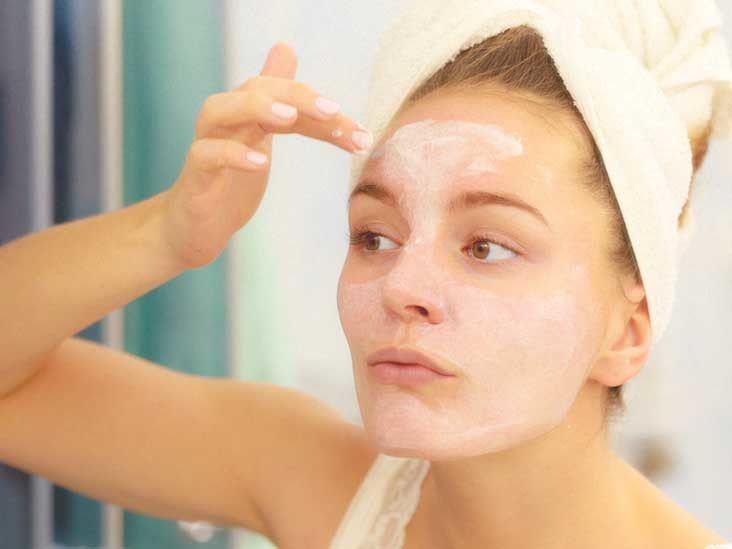Baking soda (sodium bicarbonate) has several uses when it comes to herbs and medicines. Here are some ways it can be applied:
Preserving Freshness in Herbs
Baking soda can be used to clean fresh herbs, removing dirt, bacteria, and pesticide residues. Mix a teaspoon of baking soda in a bowl of water, soak the herbs for 5-10 minutes, then rinse thoroughly.
Natural Remedy Preparation
For Digestive Relief: Baking soda can be mixed with herbal teas like peppermint or chamomile to help with acid reflux or indigestion. However, this should be done sparingly, as excessive consumption can lead to imbalances.
For Skin Treatments: Baking soda can be combined with herbs like aloe vera or turmeric to create soothing pastes for rashes, insect bites, or minor skin irritations.
Enhancing Herbal Growth
Baking soda can reduce soil acidity when cultivating herbs. A small amount sprinkled around herb plants can neutralize overly acidic soil, promoting healthier growth.
Not Just For You Kitchen
You may know it as the orange box that lurk in the back of your fridge to take out bad smells. Or as a panty staple that helps your baked good rise. But baking soda deserves a spot in your medicine cabinet too .
Here's how it keeps your body healthy and clean
As a Natural Disinfectant
It can be used to disinfect tools, containers, or surfaces used for processing or storing medicinal herbs. Create a solution with baking soda and warm water for cleaning purposes.
Making Herbal Mouthwash And Cleaner Teeth
Combine baking soda with dried mint or other antibacterial herbs to create
a natural mouthwash. Mix a teaspoon of baking soda in warm water with the
crushed herbs, then strain before use. It doesn't merely mask the smell with a mint scent like most mouthwash do, baking soda actually banishes the odor. Baking soda works great to physically remove plaque, the sticky film of bacteria in your mouth. Over time, a plaque build hardens into tartar and can lead to gum disease. Dip a wet toothbrush into the powder and brush as usual. It doesn't have the fluoride you need to protect against tooth decaying cavities. Many public water supplies have added fluoride. Even so , brush with regular toothpaste as well to be safe
Body Deodorant
Most things that stink have acidic or basic odor molecubes. Bakingsodabringsthemto more neutral,odor free state. No wonder sewage plants and feed lots use the stuff. It also work on your body odor. Dust a little under your arms in the morning. If you don't care for the powdery residue on your clothes, use stick deodorants that have baking soda.
Facial scrub
Baking soda is mildly abrasive,. Use it as a gentle face cleaners. Wash your face with a mild, non abrasive cleanser and rinse with water. Then make a paste of 3 part of baking soda to 1 part of water. Rub it carefully in circles for a deep clean. Rainse with water
Help Fight Cancer

Sodium bicarbonate are stored in hospitals and Emergency rooms as a treatment for cardiac arrest, poisoning, and other cases. It also helps to counteract the acidic properties of chemotherapy medications for cancer.
Eases pain
Sodium bicarbonate may boost the pain killing powers of lidocaine used in epidurals. If you are hurting from sunburn, soak a washcloth in a solution of about 4 tablespoon of baking soda per quart of water . Gently dab it on the affected areas to soothe your skin
Precautions
Always use food-grade baking soda.
Avoid Excessive Use, especially when ingesting, as it may disrupt the body's pH balance.
Consult a healthcare professional before combining baking soda with any medicinal herbs for therapeutic purposes.
RECIPE AND GUIDANCE
HERBAL TEA FOR DIGESTION ( WITH BAKING SODA)
Here’s a simple recipe for herbal tea with baking soda to help with digestion:
Ingredients:
1 teaspoon dried peppermint, chamomile, or ginger (or a combination)
1 cup boiling water
1/8 teaspoon baking soda
Honey or lemon (optional, for flavor)
Instructions:
1. Brew the Herbal Tea
Place the dried herbs in a teapot or mug.
Pour 1 cup of boiling water over the herbs.
Cover and let it steep for 5-10 minutes.
2. Strain
Strain the tea to remove the herbs.
3. Add Baking Soda
Stir in 1/8 teaspoon of baking soda until it dissolves completely.
4. Optional Sweetening
Add honey or a squeeze of lemon for added flavor, if desired.
5. Drink Warm
Sip the tea slowly, preferably after meals, to help with digestion.
Hw It Works
Herbs like peppermint or chamomile soothe the stomach and reduce bloating.
Baking soda helps neutralize stomach acid, easing symptoms of indigestion or heartburn.
Precautions
Limit this remedy to once or twice a day to avoid excess sodium intake.
Consult a healthcare provider if you’re on medication or have chronic diseases.
SOOTHING PASTES FOR SKIN DISEASES.
Here’s a simple recipe for a soothing paste with baking soda and herbs to help with skin irritations, such as rashes, insect bites, or minor burns:
Ingredients
2 tablespoons baking soda
1-2 teaspoons aloe vera gel (fresh or store-bought)
1 teaspoon dried or fresh turmeric (anti-inflammatory)
A few drops of lavender essential oil (optional, for soothing properties)
Water (as needed, to adjust consistency)
Instructions
1. Combine Dry Ingredients
In a small bowl, mix baking soda and turmeric until evenly combined.
2. Add Aloe Vera Gel
Add aloe vera gel to the mixture and stir to form a thick paste.
3. Adjust Consistency
Gradually add water, one teaspoon at a time, if the paste is too thick. You want a spreadable, non-dripping consistency.
4. Optional: Add Essential Oil
Mix in 2-3 drops of lavender essential oil for additional calming effects.
Application
1. Clean the affected skin area with warm water and pat it dry.
2. Apply the paste gently to the irritated area.
3. Let it sit for 10-15 minutes or until it dries.
4. Rinse off with cool water and pat the skin dry.
How It Works
Baking soda reduces itching and irritation by neutralizing the skin’s pH.
Aloe vera soothes and moisturizes the skin.
Turmeric is anti-inflammatory and antimicrobial.
Lavender oil enhances the calming effect and promotes healing.
Precautions
Avoid applying the paste to open wounds or broken skin.
Test a small patch of skin first to check for sensitivity to turmeric or essential oils.
Use once or twice daily as needed, but not for prolonged periods without consulting a dermatologist.
NATURAL MOUTHWASH WITH BAKING SODA AND HERBS
Here’s a simple recipe for a natural mouthwash using baking soda and herbs to promote oral hygiene and freshen breath:
Ingredients
1 cup warm water
1 teaspoon baking soda
1 teaspoon dried mint, rosemary, or thyme (choose based on preference or availability)
2-3 drops peppermint essential oil (optional, for freshness)
1 teaspoon honey (optional, for taste)
Instructions
1. Infuse the Herbs:
Boil 1 cup of water and add the dried herbs.
Cover and let the herbs steep for 10 minutes.
Strain the mixture to remove herb particles.
2. Add Baking Soda:
Stir in 1 teaspoon of baking soda until fully dissolved.
3. Optional Additions
Add 2-3 drops of peppermint essential oil for a refreshing scent and antibacterial properties.
If desired, mix in a teaspoon of honey to sweeten the mouthwash naturally.
4. Cool And Store
Allow the mouthwash to cool completely.
Transfer to a clean bottle or container and store in the refrigerator for up to 3 days.
How To Use
Shake the bottle before each use.
Rinse your mouth with about 1-2 tablespoons for 30 seconds to 1 minute, then spit out.
Use after brushing or whenever you want a quick refresh.
Why It Works
Baking soda neutralizes acids, helping to reduce bad breath and prevent plaque.
Herbs like mint, rosemary, and thyme are antibacterial and promote healthy gums.
Peppermint oil provides a refreshing and cooling sensation, while honey adds antibacterial and soothing properties.
Precautions
Do not swallow the mouthwash.
If you experience irritation, discontinue use and consult a dentist.
Avoid if allergic to any ingredient.
FOR CLEANING HERBS BEFORE USE
Here’s a simple and effective method to clean herbs using baking soda to remove dirt, bacteria, and pesticides:
Ingredients
1 tablespoon baking soda
1 quart (4 cups) of water
Fresh herbs (e.g., basil, cilantro, parsley, mint)
A colander or bowl
Instructions:
1. Prepare the Cleaning Solution:
Fill a large bowl or basin with 1 quart of water.
Add 1 tablespoon of baking soda and stir until dissolved.
2. Soak The Herbs
Place your herbs in the solution.
Let them soak for 5-10 minutes. This helps loosen dirt and remove pesticide residues.
3. Gently Agitate
Swish the herbs gently with your hands to remove stubborn particles.
4. Rinse Thoroughly
Transfer the herbs to a colander.
Rinse them under cold running water to wash off the baking soda and any remaining dirt.
5. Dry The Herbs
Shake off excess water.
Lay the herbs on a clean kitchen towel or paper towels and pat them dry. You can also use a salad spinner for faster drying.
Why Baking Soda Works:
Baking soda’s mild alkalinity helps break down dirt and pesticide residues while being safe for delicate herbs.
Tips
Clean herbs just before use to keep them fresh.
For extremely delicate herbs like dill or cilantro, avoid soaking for too long to prevent wilting.
Store cleaned herbs in the refrigerator wrapped in a damp paper towel inside a zip-top bag or container.
USING BAKING SODA TO ENHANCE HERBS GROWTH
Using baking soda to enhance herb growth can be beneficial in managing soil pH, controlling pests, and preventing fungal diseases. Here's how to use it effectively:
1. Adjusting Soil Acidity
Why It Helps: Herbs like basil, oregano, and thyme thrive in slightly alkaline soil. Baking soda can neutralize acidic soil.
How To Use
1. Mix 1 tablespoon of baking soda into 1 gallon of water.
2. Water the soil around your herbs sparingly with this solution (once every 2-3 weeks).
3. Test soil pH regularly to ensure it stays within the optimal range (6.0-7.5 for most herbs).
Natural Pest Control
Why It Helps: Baking soda can deter pests like aphids, whiteflies, and slugs without harming the herbs.
How to Use
1. Mix 1 teaspoon of baking soda, 1 teaspoon of mild dish soap, and 1 quart of water.
2. Spray this solution onto the leaves and stems of your herbs to repel pests.
3. Use once a week or after heavy rainfall.
Preventing Fungal Diseases
Why It Helps: Baking soda’s antifungal properties can prevent or reduce powdery mildew and other fungal issues.
How To Use
1. Combine 1 tablespoon of baking soda, 1 tablespoon of vegetable oil, and 1 gallon of water.
2. Spray the mixture on affected or at-risk plants, covering leaves, stems, and the soil surface.
3. Apply every 7-10 days during humid or rainy conditions.
Precautions
Avoid Overuse: Excess baking soda can accumulate in the soil and harm plants. Use sparingly and monitor plant health.
Test Small Areas: Before applying any solution broadly, test on a small part of the plant to check for sensitivity.
Focus On Healthy Practices: Pair baking soda use with regular weeding, proper watering, and adequate sunlight for best results.

.jpg?alt=media&token=aff2f80a-6133-4c8b-986f-b536a48315cd)














